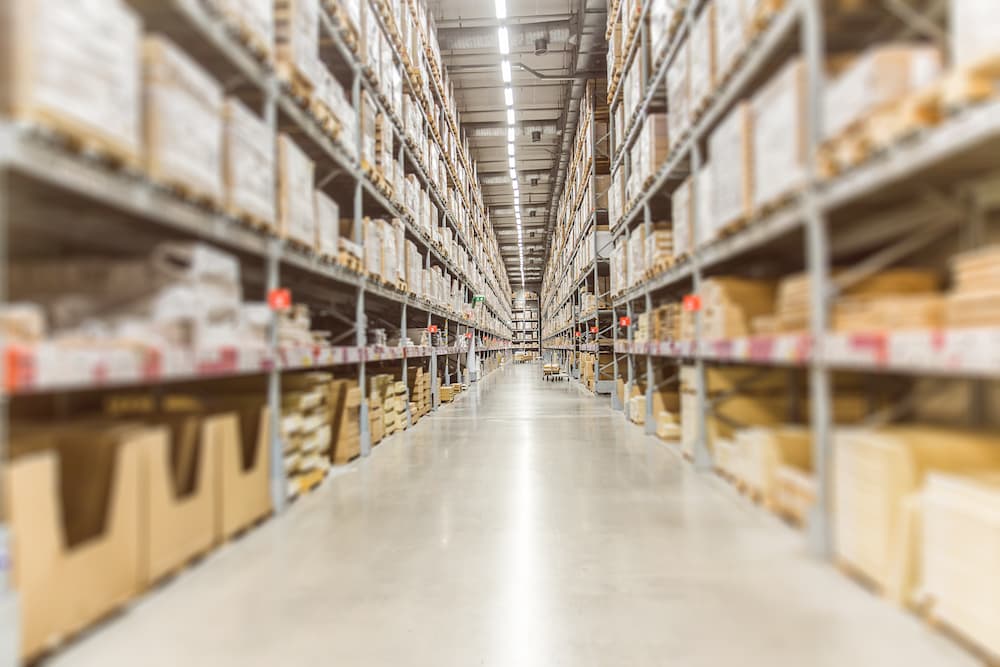Warehouse space is at a premium, and expansion is quickly becoming less viable for many organizations. As such, many organizations are looking for ways to optimize their space utilization. In this article, we’ll discuss warehousing optimization methods that don’t require expanding your square footage.
Importance of Warehousing Optimization
Optimizing space utilization in your warehouse is vital to making the most use of your available square footage. Some of the benefits of warehouse optimization include the following.
Avoid Maxing Out Warehouse Capacity
Reaching maximum warehouse capacity can be harmful to your operations. When shelves get too full, it takes longer to make adjustments to your inventory, which can be especially detrimental when seasonal changes come.
Ultimately, reaching your warehouse capacity can create a bottleneck in your supply chain, making for a less efficient process. Optimizing storage is a way to prevent that.
Streamline Operating Costs
With more breathing room, an optimized warehouse is able to operate more efficiently. There are fewer bottlenecks in your picking and putting processes, and you don’t need to invest in a larger facility, saving on overhead and building maintenance costs.
Avoid Expansion
Among the most important benefits of warehouse organization today is the fact that it allows you to do more with less overall space. The share of available warehouse space has declined significantly since 2016, making it harder than ever to secure additional square footage when needed. Maximizing the use of space in your existing facilities can save on revenue and overhead, both now and in the future.
General Ways to Improve Space Utilization in Your Warehouse
While the concept of optimizing warehouse space utilization sounds great, it can be difficult to know where to start. These general tactics can help you get started.
Expand Upward, Not Outward
If you need to increase your shelving space, it helps to think in three dimensions. Consider how much overhead space is available in your warehouse and how you might best utilize it. Taller shelves can help, as can advanced technologies.
There are many solutions that can help you maximize the use of vertical space in your facility, including vertical lift modules, vertical carousels, and mezzanines for elevated storage space. Hanging conveyors can relocate sortation and fulfillment processes from the floor to overhead space, further minimizing the horizontal square footage you need in order to operate.
Minimize Aisle Space
Keeping aisle space to a minimum can also help you optimize storage in your facility. Consider the amount of space personnel and forklifts need to move, pick/put product, and turn around, and use those measurements to build narrower aisles.
Aisle space can also be further reduced—or in some cases, eliminated entirely—by using automated warehousing solutions such as The Perfect Pick system, which is ideal for smaller items, or pallet shuttle systems, which can reduce the need for bulky forklifts.
Adjust Beams
Sometimes saving a few vertical inches here and there can add up to an extra layer of storage space across your facility. In most cases, the clearance needed for boxes and pallets is only six inches, so if you have shelving with more than that much clearance, it may be worthwhile to lower beams to create extra overhead space. Planning warehouse layout is simple with a well-tuned design system such as PWD’s FasTrak services.
Streamline Inventory
Sometimes, inventory becomes obsolete. In fact, estimates indicate that as much as 20% to 30% of inventory in well-run companies could be completely obsolete, so it’s important to cycle it out when necessary.
By cutting out dead SKUs with slow—or no—turnover, you can maximize available space for items that will actually move through your facility. In addition, placing high-turnover SKUs in easy-to-access areas can help you optimize your operations, saving on overhead and preventing bottlenecks.
Implement Warehousing Software
Finally, software solutions can help you manage your warehouse more efficiently by giving you access to valuable data. Warehouse management systems (WMS) have become highly popular, with their global market reaching $2.94 billion in 2021 and projected to continue growing in the future.
These systems can help you determine which SKUs are becoming obsolete, which ones need to be placed in easy-access areas, and even when you need to scale available item counts up or down to meet seasonal needs. Other software systems can also help you automate your processes, making it easier to make the most of your available space.
Warehouse Capacity FAQs
What does “warehouse capacity” mean?
prepare, and move inventory. It includes space needed for picking, putting, sortation, and order fulfillment.
How much warehouse space do I need?
Calculate the amount of space your current inventory takes up in cubic feet, then divide that space by your total warehouse space. If the number comes out to more than 22% to 27%, then you may need to optimize your existing space to avoid reaching capacity.
What factors affect warehouse capacity?
The types of items you keep in stock, the number of SKUs in your facility, and the storage, racking, and picking methods you use all affect warehouse capacity.
How do you manage space utilization in your warehouse?
Space utilization in your warehouse can be managed through warehouse management software and other automated solutions.
Warehouse Organization Solutions from PWD
If you’re concerned about reaching your warehouse’s capacity, we can help you design the perfect solution. At Precision Warehouse Design, we have multiple strategies for helping you consolidate inventory, streamline storage systems, and adapt to fluctuations in demand. To learn more about what we can do for you, get in touch.


